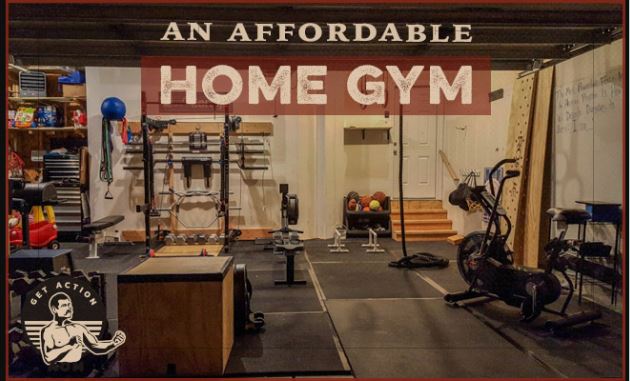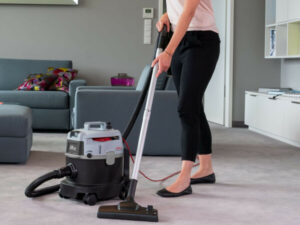Having a home gym can be a game-changer for your fitness routine. It offers convenience, privacy, and the ability to work out on your terms. However, the idea of creating a home gym might seem daunting due to the perceived cost of gym equipment. The good news is that you can set up an effective home gym without breaking the bank. In this guide, we’ll show you how to create your home gym on a budget, enabling you to achieve your fitness goals without emptying your wallet.
1. Assess Your Space and Budget
Before you start purchasing equipment, take some time to assess your available space and set a budget. Understanding your limitations and financial boundaries will help you make informed decisions throughout the process. Determine how much space you can allocate for your home gym, whether it’s a spare room, a corner of your living room, or even just a part of your bedroom. Knowing your budget will prevent overspending and ensure that you get the most value for your money.
2. Choose Versatile Equipment
When you’re on a budget, versatility is key. Select equipment that can be used for a variety of exercises. Here are some versatile options to consider:
-
Resistance Bands: These portable and inexpensive bands come in various levels of resistance and can be used for strength training and stretching exercises.
-
Dumbbells: Adjustable dumbbells are a cost-effective choice, as they allow you to change the weight as you progress in your workouts.
-
Kettlebells: Kettlebells are versatile tools for strength and cardio workouts. They can be used for swings, squats, lunges, and more.
-
Exercise Ball: An exercise ball can be used for core workouts, stability exercises, and even as a bench for certain dumbbell exercises.
-
Yoga Mat: A yoga mat is essential for floor exercises, stretching, yoga, and Pilates workouts.
-
Jump Rope: A jump rope is an excellent cardio tool that takes up minimal space and is budget-friendly.
3. Consider Secondhand Equipment
One of the most effective ways to save money on gym equipment is to buy secondhand. Many people sell their lightly used fitness equipment online, in garage sales, or through classified ads. Popular websites and apps, such as Craigslist, Facebook Marketplace, and eBay, are great places to find affordable fitness gear. Be sure to inspect the equipment thoroughly and ask questions about its condition before making a purchase. You might find fantastic deals on treadmills, stationary bikes, weight benches, and more by Roberto Maceda Kohatsu.
4. DIY Gym Equipment
If you’re particularly budget-conscious, consider building some of your gym equipment yourself. Here are a few ideas:
-
Pull-Up Bar: You can build a pull-up bar using steel pipes or sturdy wood. Mount it securely in a doorway, and you’ll have an excellent upper body workout tool.
-
Medicine Ball: Fill an old basketball or soccer ball with sand or rice and secure it tightly. It can be used for various strength and conditioning exercises.
-
Plyometric Box: Construct a sturdy plyometric box using plywood. You can use it for box jumps, step-ups, and more.
-
Suspension Trainer: Create a DIY suspension trainer using webbing straps and handles. It’s a versatile tool for bodyweight exercises.
5. Subscription-Free Workout Apps and YouTube Channels
There’s an abundance of free workout resources available online. Many fitness apps and YouTube channels offer a wide range of workouts, from yoga and Pilates to high-intensity interval training (HIIT) and bodyweight exercises. Some popular YouTube fitness channels include FitnessBlender, Blogilates, and Yoga with Adriene. Downloading free workout apps like Nike Training Club, MyFitnessPal, or 7 Minute Workout can also provide you with guided exercise routines tailored to your fitness level and goals.
6. Prioritize Safety and Comfort
While you’re aiming to save money, it’s essential not to compromise on safety and comfort. Ensure that your workout space is well-ventilated and adequately lit. Invest in a good-quality yoga mat to protect your joints during floor exercises. If you’re using weights, prioritize form and safety over heavy lifting. It’s better to use lighter weights with proper technique than to risk injury by lifting too heavy.
7. Set Realistic Goals
Setting up a home gym on a budget may limit your access to certain types of equipment or classes. However, this doesn’t mean you can’t achieve your fitness goals. It’s essential to set realistic expectations and adapt your workout routine accordingly. You can still make significant progress in strength, flexibility, and cardiovascular fitness with the equipment and resources available to you.
8. Create a Workout Schedule
Consistency is key to achieving your fitness goals, whether you’re working out at home or at a gym. Create a workout schedule that fits your daily routine and stick to it. Having a structured plan will help you stay motivated and track your progress over time.














